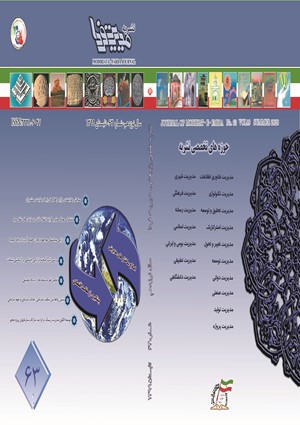-
-
List of Articles
-
Open Access Article
1 - Explain the relationship between organizational strategy and competencies on Human Capital value and Human Capital uniqueness
maryam akhavan shirin talebi -
Open Access Article
2 - Managerial Dynamic Capabilities and international technological entrepreneurship: International Opportunity recognition and Exploitation by Information technology Start-Ups
Mohammad Hasan Mobaraki Jahangir Yadollahi Farsi Yadollahi Farsi Ali Mobini Dehkordi -
Open Access Article
3 - Effect of Human resource management practice on Intrapreneurship with mediating role on as a Employee Empowerment
Hamideh Jamadi Majid Esmaeilpour fakhrieh Hamidianpour -
Open Access Article
4 - Design of online shopping improvement pattern by using ISM model
Amene Kiarazm Lotfolah Forozandeh Dehkordi Mohammad Mahmoudi Maymand mirza hasan hosseini -
Open Access Article
5 - An Analysis of the Role of Organizational Culture in Developing Entrepreneurial Behavior in Small and Medium enterprise
seyed mohammad mosavi jad haydar mohammadi Arman Ahmadizad -
Open Access Article
6 - Relational capital: The key of success to reach comparative merit
parastoo soltanii sakineh Shahi yadollah mehralizadeh -
Open Access Article
7 - A new model to assessment factors of acceptance the information technology in healthcare section (Case study: Establishment the hospital resource planning (HRP) in governmental hospitals of the Semnan)
Ebrahim Khaleghian Mohammad Mirbagheri Jam -
Open Access Article
8 - Identify the factors that influence public-private participation in urban civil engineering projects and provide an appropriate model. Case Study: Tehran Municipality.
esmaeel ghafari Karamollah daneshfard Gholamreza memarzadeh Tehran -
Open Access Article
9 - (Identification and leveling Factors Affecting the Brand Success of Knowledge-Based Industrial Business( Experimental Examples of Technology Units Deployed at Semnan Province Science and Technology Park(
hasanali Aghajani Abdolhamid Safaei Ghadikolaei Meysam Shirkhodaei hasan vahedi -
Open Access Article
10 - A model for knowledge management based on open innovation in academic centersn
Reza i Hosnav Ebrahim Mosayebi Masome Oladian -
Open Access Article
11 - The concept of Urban Entrepreneurship with grounded Theory aproach (case study:Tehran city)
mina shahamat nejad babak ziyae Majid Ashrafi Fereydoon Azma -
Open Access Article
12 - Investigating the Relationship between Organizational Performance Evaluation Components (Case Study: Public Sector Purchasing Organization)
Alireza Aliahmadi -
Open Access Article
13 - A Systematic Approach to Designing a Project oriented Organization Business Development Model
Azim Zarei Reza Behboud Adel Azar -
Open Access Article
14 - Network pattern of informal settlement’s policy problems based on DEMATEL technique
Hadi Khanmohammadi Hosein Aslipour لیلا شمس -
Open Access Article
15 - Social media and value creation: the role of interaction satisfaction
Seyed Amir Hossein Madani Abolfazl Danaei gholamreza jandaghi -
Open Access Article
16 - Investigating the impact of future-oriented talent management on career success; explaining the mediating role of Proactive Career behaviors
Mohammad Jafari nasim mousavi Ali Shariat nejad Reza Vali nejad, -
Open Access Article
17 - Provide a model for promoting the competitive advantage of businesses through higher education with research synthesis approach
Zahra Mohammadi Nasrabadi Zahra Taleb Yaghob Entezari -
Open Access Article
18 - Universal Banking Modeling Based Staff Empowerment
hamidreza kazemi naser hamidi babak hajikarimi
-
The rights to this website are owned by the Raimag Press Management System.
Copyright © 2017-2025







